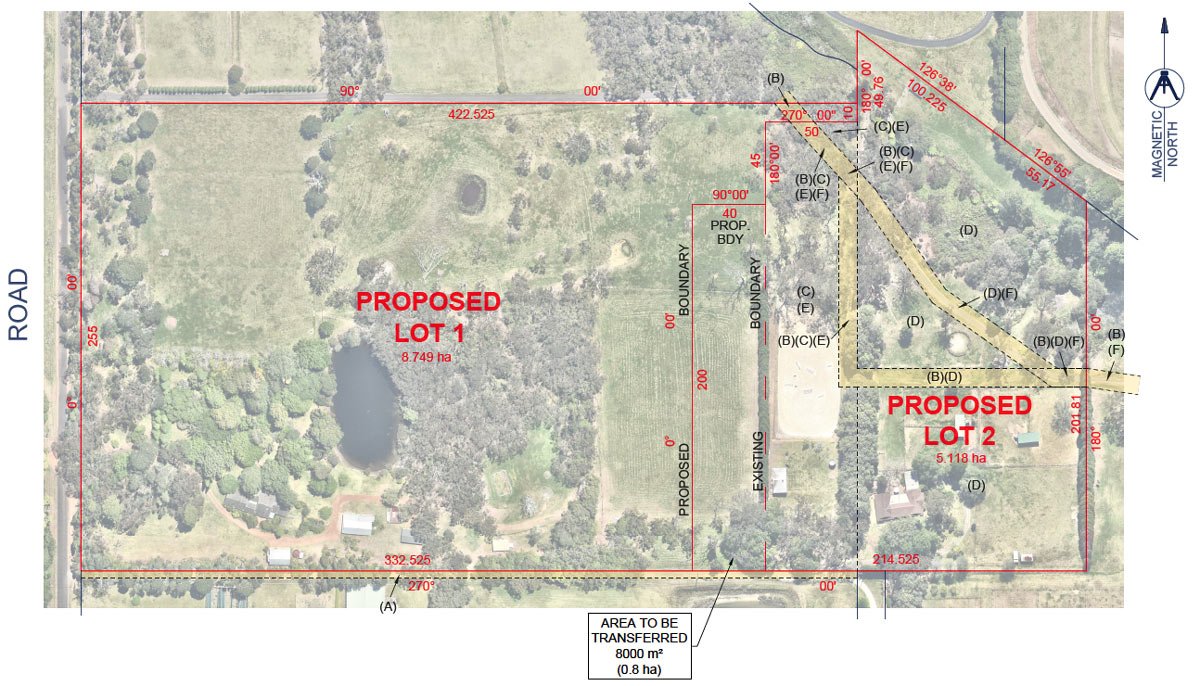Boundary Adjustments: You may be able to avoid Council
When is a boundary adjustment/realignment an Exempt Development? Can you avoid Council?
A boundary adjustment is a type of subdivision and a subdivision typically requires approval from Council. However, there are a few scenarios where you don’t need consent from Council to adjust a boundary.
Not requiring Council consent can have a number of benefits, including:
Saving considerable time and cost
Not having other conditions imposed by Council
You might not even need a Subdivision Certificate at the end
In some Council areas, a Development Application can take up to 12 months. If you can avoid having to go through Council—why would you?
What is Exempt Development?
Exempt Development is a pathway where developments of a minor nature can be carried out without a need to apply for development consent. The reason it exists is so that the planning system isn’t overburdened by the applications of a minor nature.
Examples of minor developments might include: building a fence, installing air conditioning, and some subdivisions/boundary adjustments.
The main examples of boundary adjustments/subdivisions where this applies are:
To rectify an encroachment
In an urban area, to adjust a boundary by up to 10% of the area of any lot
In a rural area, where there is not more than a minor change in the area of any lot
This is outlined in clause 2.75 of the State Environmental Planning Policy (Exempt and Complying Development Codes) 2008. If you’d like to find out more information that applies to each of these examples, click here.
The process
Not every registered Surveyor is experienced with Exempt Developments. Some Surveyors still think that you need a Subdivision Certificate at the end, when in fact you don’t. It’s important to work with an experienced consultant who’s been down this road before.
At Robertson Surveying, we can guide you through this process and we have experience navigating the process without the need for Subdivision Certificate.
Consult a registered surveyor to assess your proposal
Surveyor prepares a brief submission to council confirming the proposal qualifies as exempt development (not always required, but is preferable)
If council agrees, proceed with the survey and boundary adjustment
The surveyor prepares a detailed statement for NSW Land Registry Services, outlining how the boundary adjustment is Exempt Development
The plan is lodged for registration with NSW LRS to complete the process
You may need a solicitor or conveyancer involved to prepare a transfer of the land if it is changing hands.
Case Study:
One of our clients owns a rural property and needed to buy a strip of land from his neighbour.
Being of a minor nature, the proposal was discussed with Council to confirm that they agreed that it was Exempt Development. This process took about 2 weeks, instead of up to 12 months.
A Survey was completed to prepare a subdivision plan and a detailed report was prepared for NSW Land Registry Services to prove that the boundary adjustment was in fact Exempt Development and there was no need for a Subdivision Certificate.
NSW LRS registered the plan without issue, removing the need to apply for a Subdivision Certificate from Council, which would have incurred further time and expense to the client.
The client has now been able to complete the transaction with their neighbor with a timeframe much shorter than the usual DA process for that council area.
Speak to a Registered Surveyor
This approach can significantly streamline the process for minor boundary changes while avoiding the need for full council approval.



